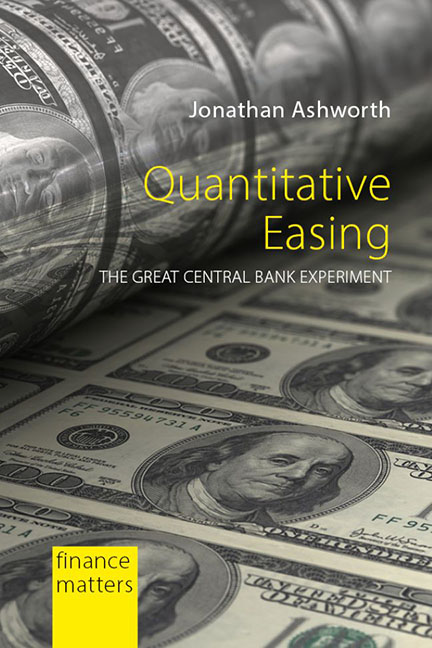Book contents
- Frontmatter
- Contents
- Preface and acknowledgements
- Abbreviations
- Foreword
- 1 Monetary policy-making since the end of Bretton Woods
- 2 Key monetary policy trends and events in the decades before the Great Financial Crisis
- 3 The Great Financial Crisis and the onset of quantitative easing
- 4 How quantitative easing works
- 5 Measuring the effectiveness and impact of quantitative easing
- 6 International spillovers of quantitative easing
- 7 Criticisms and negative externalities of quantitative easing
- 8 Exiting quantitative easing and policies for the next slowdown
- Conclusion
- Notes
- References
- Index
7 - Criticisms and negative externalities of quantitative easing
Published online by Cambridge University Press: 20 December 2023
- Frontmatter
- Contents
- Preface and acknowledgements
- Abbreviations
- Foreword
- 1 Monetary policy-making since the end of Bretton Woods
- 2 Key monetary policy trends and events in the decades before the Great Financial Crisis
- 3 The Great Financial Crisis and the onset of quantitative easing
- 4 How quantitative easing works
- 5 Measuring the effectiveness and impact of quantitative easing
- 6 International spillovers of quantitative easing
- 7 Criticisms and negative externalities of quantitative easing
- 8 Exiting quantitative easing and policies for the next slowdown
- Conclusion
- Notes
- References
- Index
Summary
QE has received significant criticism on numerous fronts owing to fears it would fuel surging inflation, currency debasement and financial instability and amid accusations that it has been responsible for a huge rise in inequality within countries. One senior German politician even suggested it was partly responsible for the rise in right-wing extremist political groups. In this chapter, I highlight and examine the many criticisms aimed at QE and other easy money policies by politicians, the media, the general public and some economists. The growing criticism of central banks has raised important questions about the appropriate level of coordination with governments in future downturns and reopened the debate about the desirability of their independence, which I highlight and discuss.
Some fears of an inflation surge
Perhaps the most feared negative externality of QE when it was first announced in the US and UK was that it would generate runaway inflation, with some commentators describing it as “money printing” and making comparisons with the German Weimar Republic in the early twentieth century and more recently Zimbabwe, where, in cooperation with their governments, the central banks financed huge increases in government spending, eventually resulting in hyperinflation. In the event, QE did not fuel surging inflation and, as previously highlighted in Chapter 5, the main central banks have in fact actually struggled to raise inflation back up to their 2 per cent targets.
There appear to be a number of reasons why the early rounds of QE in the US and UK did not lead to the surge in inflation that some feared:
(i) Although there are a number of similarities and the dividing lines can become increasingly blurred (Turner 2013), US and UK QE typically differed in some important respects to the monetary financing of government fiscal deficits, which occurred in Weimar Germany and Zimbabwe. Crucially, with QE the decision to purchase assets by central banks was made independently of governments and was taken with the intention of increasing aggregate demand and so preventing inflation falling materially below their targets. As Miles (2012) notes in relation to the BoE, “The decision of the MPC to embark on asset purchases on an enormous scale was not done because it had abandoned the inflation target, it was done because of the inflation target”.
- Type
- Chapter
- Information
- Quantitative EasingThe Great Central Bank Experiment, pp. 111 - 134Publisher: Agenda PublishingPrint publication year: 2020



